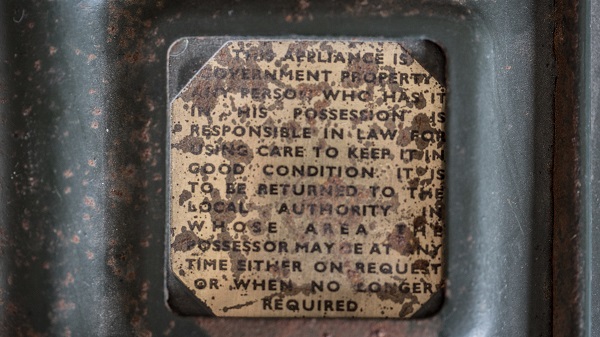War Child
The MERL is very excited to announce the publication of War Child, an online ‘mixed-media book’ which explores our Evacuee Archive from a fascinating new angle. In this visually stunning work, Teresa Murjas, Associate Professor in the Department of Film, Theatre & Television at the University of Reading, and alumnus and film-maker James Rattee have woven together an intricate tapestry of content focusing on the story of how the archive came into being and how it continues to shape the life of its creator, Martin Parsons.

The inspiration for this unique project came from Teresa’s initial meeting with Martin in 2013 when he was speaking about the Evacuee Archive at a meeting for scholars interested in the University’s Collection Based Research programme:
I became particularly curious about the Evacuee Archive through my meetings with Martin. His willingness to talk to me lies at the centre of the project. My interest about how the archive came into being was generated in discussion with him. The project attempts to tell a story of the archive’s growth through focusing on a series of edited audio fragments from our dialogue and on imagery that investigates and reflects on a small collection of significant objects. These key elements act as ‘guides’ on a sometimes light-hearted journey of exploration into a few of the possible reasons why this archive exists, and the relationships and attachments associated with it. This is why the title of the project incorporates the phrase ‘meditating on an archive’. It might also be possible to argue that the new material we have collected and drawn together as part of the project is an extension of the archive held at MERL, or perhaps that it creates a new gateway to it.
 The British Government scheme to evacuate children from cities during the Second World War began in September 1939. Children, usually without their parents, were sent to areas of Britain that were considered safer from bombing and the effects of war, these were often rural areas. Our collection contains written memoirs, oral history interviews and research material relating to former evacuees and war-children.
The British Government scheme to evacuate children from cities during the Second World War began in September 1939. Children, usually without their parents, were sent to areas of Britain that were considered safer from bombing and the effects of war, these were often rural areas. Our collection contains written memoirs, oral history interviews and research material relating to former evacuees and war-children.
In his career as a historian of Second World War child evacuation and lecturer at the University of Reading, Martin accumulated a wealth of research materials and documents which he generously donated to the Museum helping to make our Evacuee Archive the largest resource of its kind outside London’s Imperial War Museum. While ‘War Child’ displays many of these records and artefacts in an accessible and unique format, the real power of the project is combining the materials collected with audio files, which exhibit its creator’s extensive knowledge of the collection and its origins. As Martin’s daughter, Hannah, explains in an audio clip from ‘Meeting Five’ of War Child, her father is the archive and it is a rare treat for this kind of memory to be captured alongside the physical collection.
Understanding and exploring this aspect of our archive was however, a natural process for the creators of War Child:
A lot of my research and teaching focuses on the work of arts practitioners whose interests lie in communicating the experiences, memories and stories of children affected by war. ‘War
child’ builds on that research and teaching, in that it seeks to both point towards and respond to, what is a very important conflict-related resource for researchers, whatever their age and background – namely the Evacuee Archive. Seeking to understand and explain how war continues to affect children remains an ongoing and urgent necessity. Consulting and contributing to this ever-expanding archive can form part of that process.
When exploring the War Child site, I personally found Martin’s discussion of the evacuee luggage label of particular interest. Not only does Martin describe how these labels were a symbol of the immense logistical feat achieved during the War, he also emphasises the dehumanising effect they had on the evacuated children. Significantly, these labels were often kept as prized possessions and have become an evacuee’s own version of a military medal, with people proudly displaying their labels on Remembrance Day for the march past at the cenotaph. Meanwhile, for Teresa, one of the most interesting artefacts from the collection is actually one that is missing:
I am really interested in the section about the doll. Arguably, I got disproportionately excited about the doll in the archive that cannot be found! No one really knows where it has gone, or when it went. Working through our disappointment, but also our, in retrospect, persistent questions about what it was like, what it would be like to find it and so on, could probably be a bit wearing for Martin at times, I think, and he was extremely patient. Nevertheless, those discussions feel very rich and complex now, because there was this strong sense of investigation about them, on everyone’s part. For me, that section feels in some important way as though it is at the centre of the work.
While War Child is a fantastic companion piece to our Evacuee Archive, it is also an illuminating archive in and of itself; a significant chapter of the story, containing records and memories of the experiences of those most closely involved in developing the collection and bringing it to MERL where it can be preserved for and shared with generations to come.
It would be great if people felt motivated to re-visit War Child over time. It contains a lot of material, and coming back to that in stages, as we have, can shed new light.
Written by Louise Cowan, Trainee Liaison Librarian
